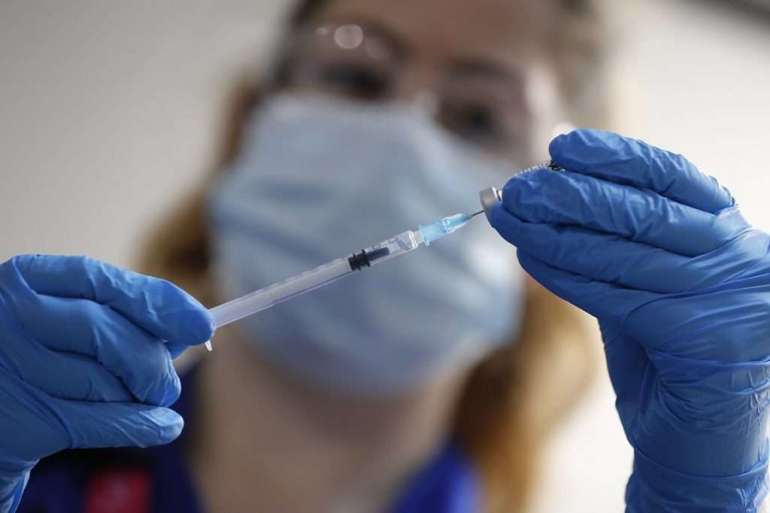FDA authorizes first Covid-19 vaccine for emergency use

The United States is the sixth country to allow use of the Pfizer vaccine, which President Donald Trump called “a medical miracle” in a video statement posted on Twitter Friday night. The FDA made its decision after months of pressure from the president, who tried and failed in his goal to have a Covid vaccine ready by Election Day.
On Friday morning, hours before the Pfizer authorization, the president attacked the FDA on Twitter, calling the agency “a big, old, slow turtle.” The same day, Trump’s chief of staff, Mark Meadows, warned FDA Commissioner Stephen Hahn that he could be ousted if his agency failed to quickly authorize the Pfizer shot. That prompted the agency to accelerate its announcement, originally planned for Saturday. (Hahn has said that media reports of the Meadows discussion are “an untrue representation.”)
Hahn and FDA’s chief vaccine official, Peter Marks, had already taken the unusual step of issuing a statement early Friday morning saying that the agency was preparing to authorize the vaccine.
Speaking Friday afternoon, President-elect Joe Biden said Americans “should have confidence” in the vaccine and the process for approving it. “There is no political influence,” he said. “These are first-rate scientists taking their time looking at all of the elements that need to be looked at. Scientific integrity led us to this point.”
And the American Medical Association called the vaccine “a monumental milestone with the potential to set us on a road to recovery,” adding that “the comprehensive, science-based, transparent nature of this process is critical to inspiring the public’s confidence in this vaccine.”
Federal health officials have said that roughly 2.9 million doses of the Pfizer vaccine could be shipped out to vaccination sites around the country as early as Monday. That’s about half of the 6.4 million doses the government has said will be available for the first wave of vaccinations; it is holding back enough to ensure that the first vaccine recipients get the second of two doses three weeks after their first.
Each state has the power to determine which groups get priority for limited early supplies of the vaccine, although many governors and state health agencies are looking to the recommendations of a Centers for Disease Control and Prevention advisory panel. It will meet on Saturday morning to vote on whether to recommend public distribution of the Pfizer vaccine, who should get it and in what order.
The panel has already recommended that health care workers and residents of long-term care facilities, such as nursing homes, be given top priority for coronavirus shots.
Different groups — such as teachers and essential workers — are jostling for a place near the front of the line behind health care workers and the elderly. The stakes are especially high given that the United States has preordered just 100 million doses of the Pfizer vaccine. Because the vaccine is given as two doses three weeks apart, that initial order is enough to treat only 50 million people.
The FDA is expected to authorize a second Covid-19 vaccine, from Moderna, later this month. On Friday the government doubled its initial 100-million-dose order of that shot, which like Pfizer’s vaccine is given as two doses per person. With both companies reserving doses for other countries, and intense global demand for any effective coronavirus vaccine, some public health experts say the United States could fall off a “vaccine cliff” in the spring as its initial supply of doses dwindles.
The Trump administration has rejected such speculation; its top officials are sticking by projections that most American adults can be vaccinated by May.
But meeting that goal could depend on how many of the vaccines the government has preordered — totaling 800 million doses from six manufacturers, including Pfizer and Moderna — turn out to be safe and effective.
Johnson & Johnson, the only one of the six with a vaccine given as a single dose, recently cut the enrollment goal for its late-stage clinical trial from 60,000 people to 40,000. The surging U.S. outbreak has accelerated the rate at which the company is accruing data to prove whether or not its shot works, allowing it to shrink the footprint of its study.
Another frontrunner, AstraZeneca, released data this month from a mix of late-stage clinical trials. The company found that its standard two-dose regimen was 62 percent effective, while a lower dose paired with a standard-strength second dose was 90 percent effective.
The low dose-standard dose regimen was the result of an error that affected a small group of trial participants in the U.K., the company has said. It has not yet offered an explanation for the counterintuitive results, which some outside experts have said could be a statistical fluke based on the relatively small number of people in the lower-dose group.
And a third vaccine developed with U.S. government assistance, from Sanofi and GlaxoSmithKline, won’t be ready until late next year, the companies said Friday — blaming a preliminary study that found an insufficient immune response in older adults.
Sarah Owermohle and Zachary Brennan contributed to this report.